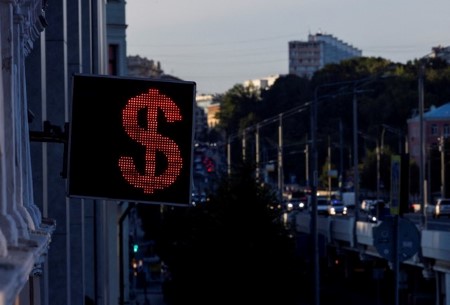




Philippines Trade Update: Trade trajectories trend along
 DOWNLOAD
DOWNLOAD

Policy Rate Updates: Double cut finale
 DOWNLOAD
DOWNLOAD

Monthly Economic Update: One for the road
 DOWNLOAD
DOWNLOAD


US yields sink after producer prices data boost early rate cut bets

NEW YORK, Jan 12 – US Treasury yields slid on Friday after producer prices data for December fell unexpectedly, raising bets of an early interest rate cut by the Federal Reserve this year.
US two-year yields dropped to their lowest since May at 4.119% in the wake of the data. They were last down 11.8 basis points (bps) at 4.142%. For the week, two-year yields, which reflect rate move expectations, were down 13.1 bps, their worst weekly showing in a month.
The benchmark 10-year yield, on the other hand, slid to a one-week trough of 3.916%, and was last at 3.955%, down 1.7 bps.
Data showing that the US producer price index for final demand slipped 0.1% last month pressured Treasury yields. The numbers for November were revised to show the PPI falling 0.1% instead of being unchanged as previously reported. Economists polled by Reuters had forecast the PPI rebounding 0.1%.
“The path continues to clear for the Fed to begin cutting interest rates in 2024 and to slow the pace at which they shrink their balance sheet,” Bill Adams, chief economist for Comerica Bank in Dallas, write in emailed comments.
Comerica, Adams added, forecasts that the first rate cut will be at the June policy meeting and the Fed will begin slowing balance sheet run-off or quantitative tightening in the second half of the year.
The PPI report follows Thursday’s consumer price index (CPI)data that came in slightly hotter than expected. The headline CPI rose 3.4% in December on a yearly basis versus the consensus forecast of a 3.2% increase.
The CPI numbers briefly pushed US Treasury yields higher.
Thierry Albert Wizman, global rates and FX strategist at Macquarie in New York, pointed out, however, that the real concern lies in potential supply shocks due to interruptions in global shipping in the midst of the situation in the Red Sea.
“That’s the main concern. It’s not that we’re getting an increase in aggregate demand, but we’re getting a reduction in supply instead that causes inflation,” Wizman said.
For instance, container shipping rates for key global routes have already soared this week, with US and UK air strikes on Yemen stirring concerns of a prolonged disruption to global trade in Red Sea, one of the world’s busiest routes.
The closely watched spread between 10-year and two-year US Treasury yields on Friday steepened further, or narrowed its inversion to minus 18 bps. That was the least inverted since November, with the curve last at minus 18.6 bps.
Analysts referred to Friday’s yield curve move as a bull steepener, in which short-term interest rates post sharper falls than longer-dated ones. This reflects market expectations the Fed will soon start cutting rates.
The US rate futures market has priced a nearly 80% chance of a rate cut at the Fed’s March policy meeting after the PPI data, up from 71% late on Thursday, according to LSEG’s rate probability app. For 2024, futures traders are betting on at least six rate cuts of 25 bps each, taking down the fed funds rate to 3.6% by the end of the year.
Macquarie’s Wizman said he is not convinced the Fed will cut rates in March. Wizman noted that it will take time for the Fed to go from a tightening to an easing bias.
“Presumably the Fed would have prepared the markets sufficiently for a cut, and that’s going to take a few meeting cycles. It’s more likely in June,” Wizman said.
In other maturities, US 30-year bond yields slipped 2.1 bps to 4.158%.
(Reporting by Gertrude Chavez-Dreyfuss; Editing by Toby Chopra, Andrea Ricci, and Will Dunham)
This article originally appeared on reuters.com





 By Reuters
By Reuters